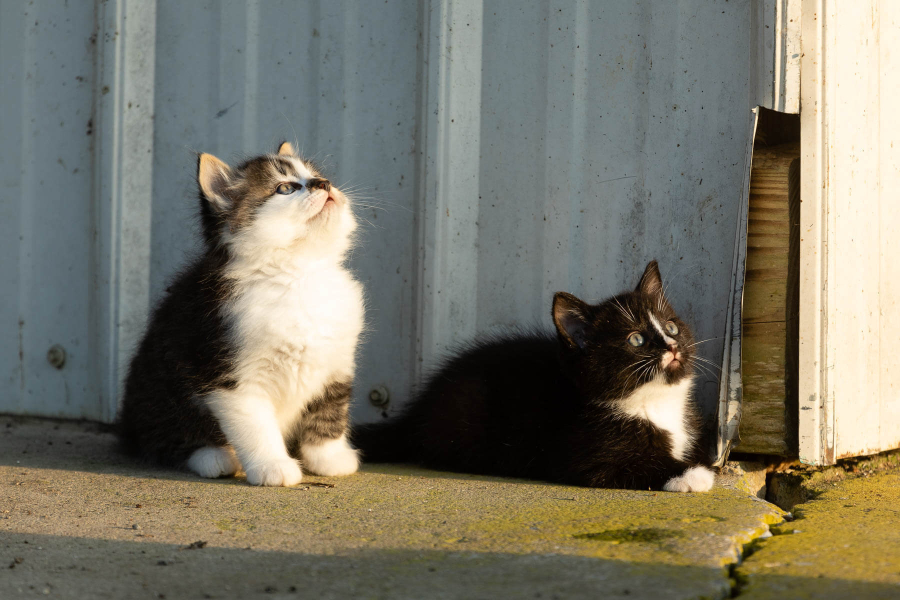Outdoor cats ruffle feathers
Billions of birds are threatened by outdoor cats each year

We often think of outdoor cats as lovable wanderers, napping in puddles of sunlight and patrolling neighborhoods for pests to affectionately deliver them to your front door. However, outdoor cats can present a very real threat to our ecosystem.
A 2013 study found that free-ranging domestic cats kill between 1.3 and 4 billion birds in the United States each year, making them the leading human-caused threat to birds in the country. The study also found that outdoor cats kill anywhere between 6.3 and 22.3 billion mammals and reptiles annually.
Approximately one-in-three of these deaths were brought about by cats with owners who regularly allowed them to venture outside, while the remainder were primarily caused by feral cats––those who were born and raised in the wild, often with little to no human contact.
In the United States, around 90 million cats have assigned owners, while between 30 and 80 million are believed to be stray or feral. Among cats with owners, around 70 percent are indoor only cats and about 25 percent move freely between inside or outside. The remaining five percent are outdoor only cats.
In some cases, predation by cats has been devastating. A 2011 study found that feral cats are responsible for at least 14 percent of all bird, mammal and reptile extinctions worldwide, and are a leading threat to almost eight percent of endangered species. Feral cats prove especially problematic on small islands, which tend to house large amounts of biodiversity. When confined on an island, cats begin to reproduce rapidly, eventually overwhelming the island’s fragile ecosystem.
Outdoor cats also present a problem right here in the Chesapeake Bay watershed. Some of the Bay’s most beloved birds face predation from domestic cats, including the eastern bluebird, Baltimore oriole and ruby-throated hummingbird. These birds are often drawn to suburban gardens, bird feeders and bird houses, where they make perfect prey for any cats who might be lurking nearby.
There is no perfect solution to the problem of outdoor cats. They are instinctive hunters and are always eager to make a feathered friend. However, there are some steps you can take to help decrease their impact on the Bay watershed:
- Keep your cat indoors: Keeping your cat inside can do more than protect the ecosystem. There is evidence that indoor cats live longer, healthier lives than cats living outdoors, where they are more prone to predation, disease and accident. In fact, indoor cats are estimated to live as much as four to six times longer than outdoor cats.
- Tag your cat: One of the best ways to prevent the spread of outdoor cats is to make sure your own cat never wanders too far. Tagging your cat with a microchip or an identification tag can go a long way to making sure your cat always finds its way home.
- Avoid feeding feral cats: While it might feel like a harmless gesture, feeding a feral cat will only encourage its colony to continue breeding. These cats can spread diseases and are often unfriendly towards humans. Therefore, it’s best to keep your distance.
- Install bird houses responsibly: Bird houses can be a wonderful addition to your backyard, providing a valuable home to the watershed’s native birds. However, it’s important to keep your bird house elevated and out of reach of any feasting felines.
Cats make amazing pets, but even the most well-meaning of kitties can get up to mischief when left to the great outdoors.

Comments
how have birds survived up until now if all of the cats are so severely depleting their numbers?
take away outdoor cats and you get rats and mice. tnr programs neuter and vaccinate feral cats.
but if no one feeds them dont blame them for going after a bird eating at a feeder.
Dylan, this is a good article and frames the problem we have with cats in the U.S. fairly well. So, thank you for writing it! BUT, I have to take exception to your comment about not feeding feral cats. I and several of my friends do so not only because it is humane, but also because it is then is easier to trap them so they can be neutered (TNR); the vet "tipps" the left ear to show a cat has been neutered (and rabies and other vaccinations are typically given at the time of surgery.) We have out of control cat colonies everywhere in the U.S. (185,000 estimated homeless cats in the City of Baltimore alone!) The best way to gain control and reduce cat populations is to TNR; and give your neighbors a hard time if they let their domestic cats roam your neighborhood, killing birds and eating the feral cats' dinners! Cats, like dogs, should not roam freely when they have homes and loving families. As you correctly stated, cats who are pets live much longer, healthier lives when kept indoors. Thanks again from an animal lover (and cat expert) in Maryland.
Thank you!
Your comment has been received. Before it can be published, the comment will be reviewed by our team to ensure it adheres with our rules of engagement.
Back to recent stories